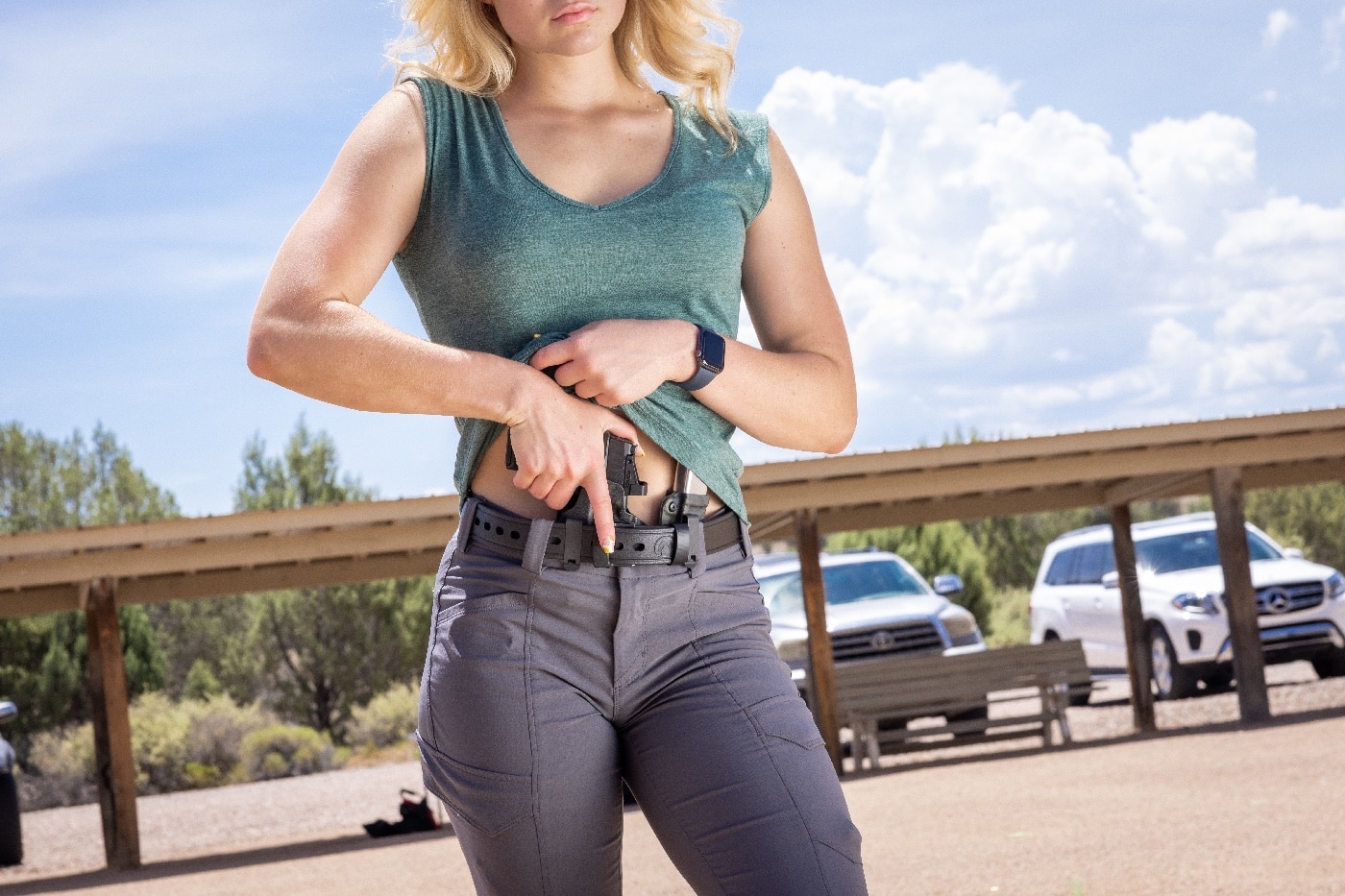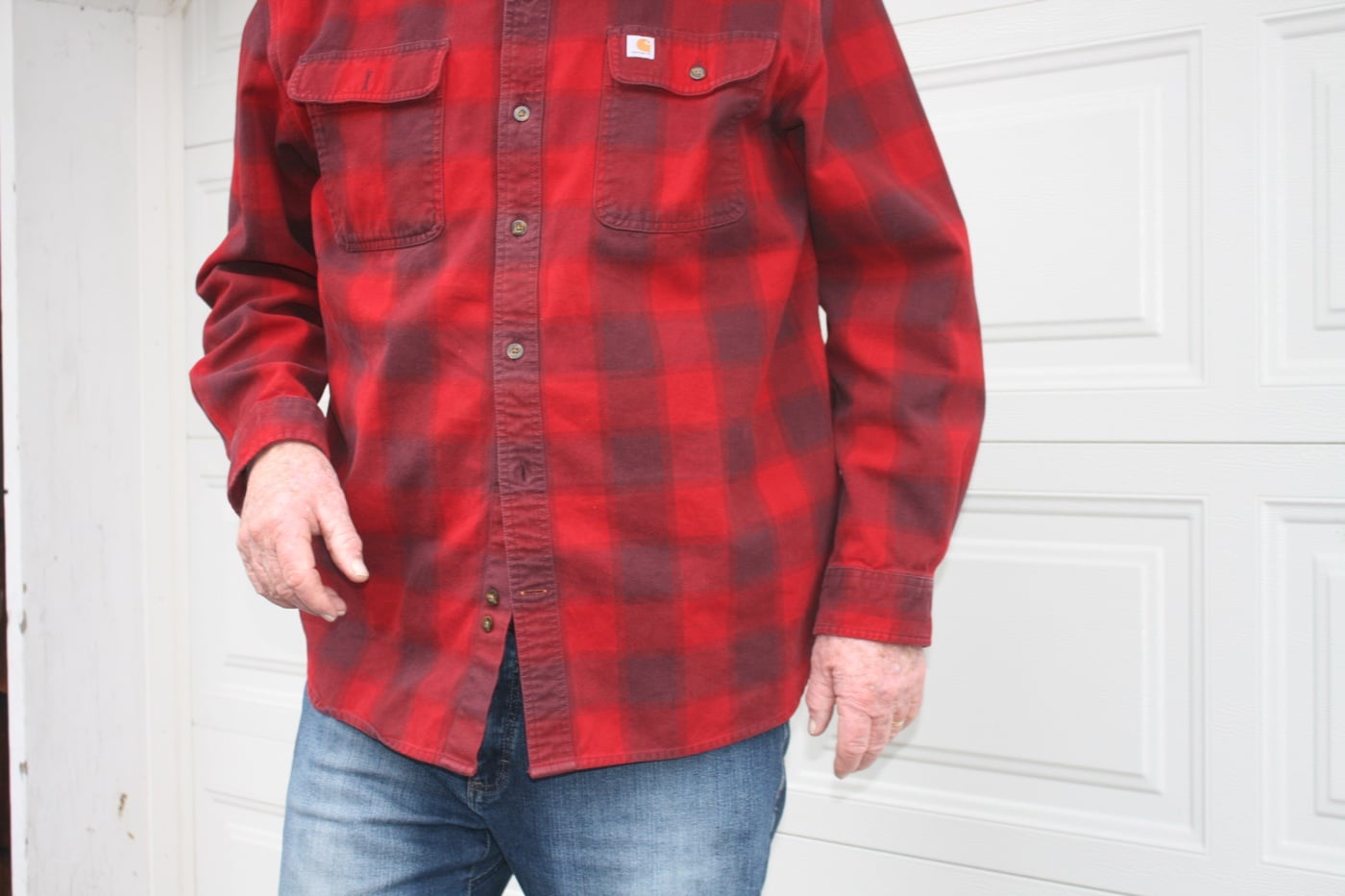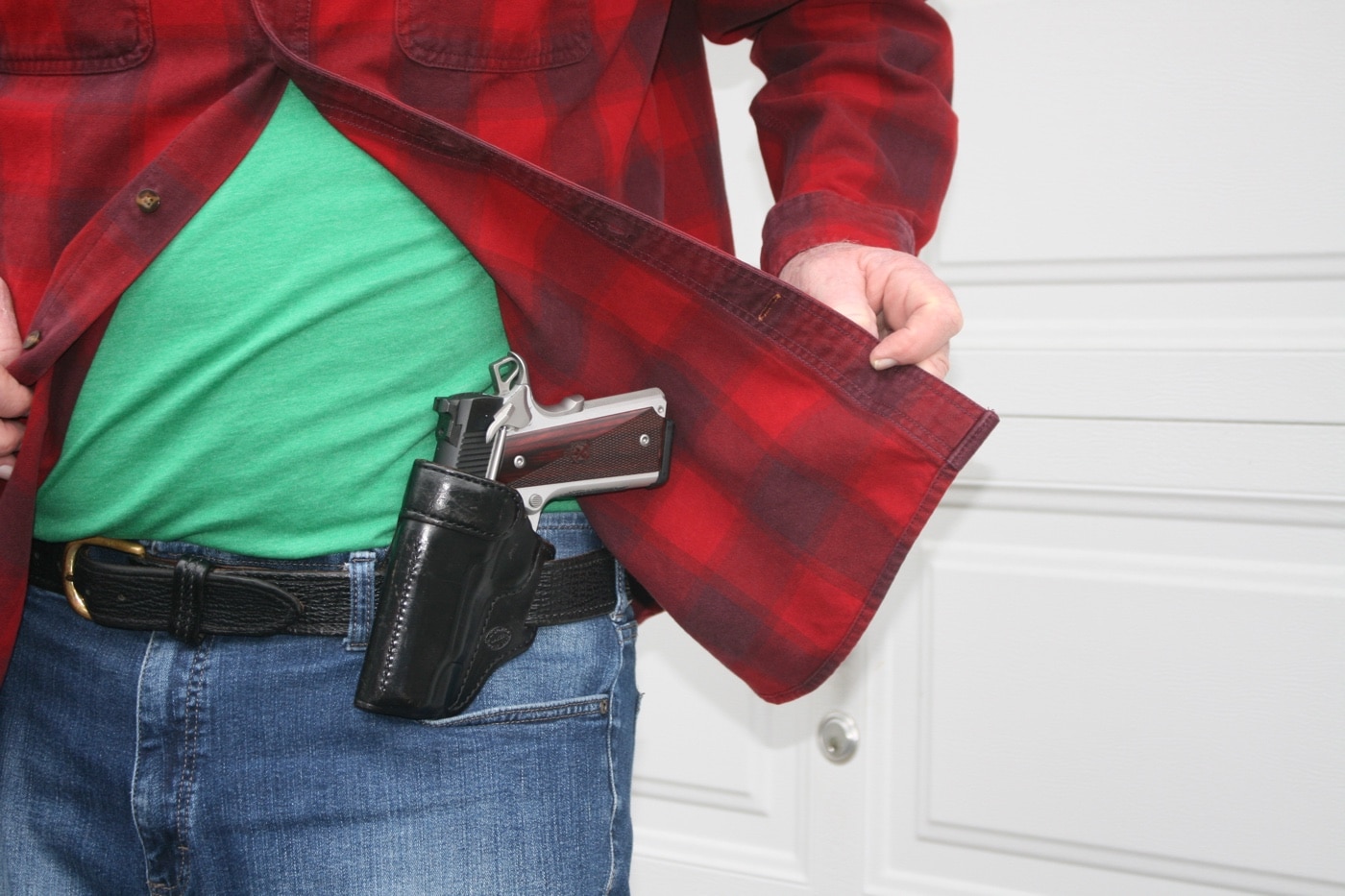Avoid Being a Target — Is Your Pistol Truly Concealed?
With the expansion of concealed carry laws in the country, more and more people have opted to take responsibility for their own protection, making a handgun part of their everyday routine. Should you choose to go down this path, there is a lot more to being successful in this endeavor than you might have originally thought. Assuming you have done your homework and selected a pistol optimized for your lifestyle, social environment and even body type are the next big considerations in figuring out how you might carry it.
Obviously, you will want to go under the radar and maintain as low as possible a profile when going armed. Conspicuous bulges and clothing out of kilter can be dead giveaways that you are packing heat. A random person in the grocery store may not notice or give it a second thought, but the police and bad guys will. If you come to the attention of a law enforcement officer, you may be taken to task and embarrassed — providing you are lawfully armed. However, the consequences can be much more severe if you are made by a criminal.
Of course, keeping a low profile would be a non-issue if we all packed a palm-sized pocket pistol, but for personal defense it is generally agreed more serious hardware is required. Tiny guns suffer from poor ergonomics, can be difficult to shoot well, and are chambered for rounds that lack true stopping potential. On the other end of the scale, human performance with large service-style handguns is far better, but their size and weight make them difficult to conceal. For most of us, the best choice lies somewhere in the middle.
Striking a Balance
There are any number of qualities that go into a good concealment holster. These include proper fit, retention, user comfort, durability and the ability to re-holster with one hand. It also must aid in hiding the gun, which is something that is often overlooked by many users. For example, many “sport” holsters turned out by manufacturers, big and small, may meet most of the above criteria but will give you up in a New York minute unless they are worn under a heavy winter jacket. Holster style, cant, and ride height all play heavily into the equation.

Considering that we wear a concealed handgun because we may have to quickly respond to a threat means accessibility is yet another issue. I have worn a concealed handgun on a daily basis for well over 40 years and am pretty confident in stating that, for the vast majority of applications, belt carry is best.
With that in mind, this discussion will focus solely on carry options worn on the belt. I recognize that may be contraindicated for some people due to the type of clothing they must wear, but anything else is a distant second. Pistols carried on the belt are fastest into action, and weapon retention is enhanced should you find yourself in a physical altercation. Ankle and pocket holsters are, in fact, deeper cover options, but a fast response with them is often outside the realm of possibility, particularly if your adversary launches a surprise attack in close quarters.
[Be sure to read Massad Ayoob’s article Ins and Outs of Pocket Carry.]
Inside-the-Waistband Options
An inside-the-waistband (IWB) holster worn in either the traditional position behind the strong side hip or forward of the hip can be very low profile. Because the slide and/or barrel are tucked inside the pants, one only has to concern themselves with keeping the grip out of view. For discreet carry, an inside the waistband holster is tough to beat; however, other factors, particularly comfort, come into play. From a personal perspective, my strong-side hip is pretty tender from having worn a handgun daily for most of my adult life. As a result, most traditional IWB holsters worn behind the hip are no longer a consideration for me. Returning the pistol to the holster can also be problematic with some designs.

Of late, appendix inside-the-waistband (AIWB) holsters have come on strong. With an AIWB rig, the holstered pistol is worn well forward of the strong side hip, close to the body midline.
[Don’t miss Robert Sadowski’s Should I Appendix Carry? article.]
Draw times are very snappy from this position, the holstered pistol can be well concealed, and weapon retention is enhanced in the event of a disarm attempt. Again, the comfort factor comes into play. I will confess to having some serious misgivings about this mode of carry, but with the right holster I have been able to make it work.

Some well-designed AIWB rigs enable the user to discreetly carry even a full-size pistol in comfort. Certain manufacturers have incorporated wedges or hooks into their holsters that press against the belt and push the butt of the pistol tight up against the body, aiding concealment. In fact, it has been my observation that larger pistols are often more stable than those with shorter slides when carried in this manner. AIWB carry may not be for everybody, but it is certainly worth a hard look.
Traditional OWB Carry
When it comes to outside-the-waistband carry, I have long made a distinction between utility holsters and true concealment rigs. Several of the larger manufacturers currently market “plainclothes” versions of their police duty rigs. These might be fine for a law enforcement officer wearing a windbreaker with “Police” stenciled on the back, but certainly wouldn’t work when you are trying to blend into polite society. My collection also includes a number of other holsters crafted from both leather and synthetics that are great for informal range wear but don’t make the cut for true concealed carry.

For an OWB to be low profile, it must fit tight to the body and ride high enough on the belt so the bottom of the holster is not peeking out the bottom of the covering garment. Most off-the-rack designs feature an FBI cant where the muzzle is angled to the rear and the grip forward. When worn slightly behind the strong side hip, the holstered pistol can be very hard to detect, assuming a proper covering garment.
For years I have taken a different approach and carry my handgun forward of the hip in a holster with the muzzle angled forward. This takes pressure off my hip and gives me the capability to produce my gun very quickly from concealment. Forward rake holsters are also a viable option for women who find wearing and drawing from an FBI style holster to be awkward. Excellent forward rake designs are available from Bulman Gunleather, Milt Sparks Holsters and the Ritchie Leather Company.
Part of a System
Regardless of the capacity of any handgun I might be carrying, I make it a point to carry spare ammunition. Much like the gun itself, a magazine or two on the belt can put up a red flag. I’m a pretty fair-sized guy, and a single magazine worn on the support side of my belt is pretty hard to detect. There are magazine pouches designed for inside the waistband carry as well as carriers for pocket carry, and these may be worth a look. I would caution that that double magazine pouch might be tough to hide under a light covering garment.

To complete the package and project the lowest possible profile, your holstered handgun needs to be in sync with your attire. The logical place to start is the foundation and the belt that you wear. To cut right to the chase, I would offer that the sort of belts you might get at the local department store aren’t going to make the cut as they are not rigid enough to support the weight of the gun. Instead, choose a dedicated gun belt which is typically available from the same firms who turn out quality holsters. A proper gun belt can be crafted from either leather or synthetic material, and there are offerings available for both casual and business attire. Avoid wearing any belt that might send off a military or SWAT vibe and draw attention to your waistband.
I am fortunate that my daily routine allows me to wear loose, casual clothing year-round, which gives me a great deal of latitude. During the cooler months, a jacket or sweatshirt helps keep my holstered pistol undetectable to the casual observer, but warmer weather is a bit more challenging as my gun still has to be covered. A loose-fitting shirt of sufficient length does the trick for me, particularly when combined with an IWB holster. Consider that a garment with a pattern will better break up the outline of your concealed handgun than a solid color. No matter what sort of covering garment you wear, be aware certain movements such as bending forward from the waist may cause the gun to print and give you away.

Is a suit or sport jacket part of your daily wardrobe? Although a jacket will cover the gun, other factors such as the way it is cut and body type come into play. A skilled tailor can work some magic here to minimize the printing of your holstered pistol through the jacket.
Depending on your social setting, a light covering garment or vest can also be used to help hide your pistol. By all means avoid the “contractor casual” look of an adventurer’s vest, BDUs and stylish sunglasses. I would also counsel avoiding wearing any apparel with firearms, military or law enforcement logos if you really want to be discreet. Try to look like a nerd, an outdoorsman or somebody’s grandpa, not a guy with a gun.
Conclusion
Being low profile does not mean settling for less than optimum equipment or making your firearm inaccessible. With a little thought and the right gear, you too can conceal a serious handgun and those around you will be no wiser.
Editor’s Note: Be sure to check out The Armory Life Forum, where you can comment about our daily articles, as well as just talk guns and gear. Click the “Go To Forum Thread” link below to jump in!
Join the Discussion
Read the full article here


